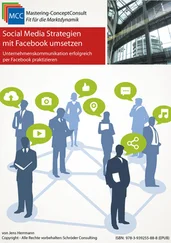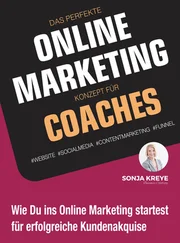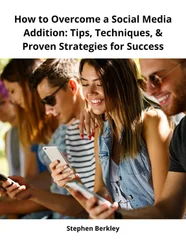Relating the material in this single class to my everyday life illuminated the possible application of what I was learning throughout my full college experience (curricular and co-curricular engagement). As a resident advisor and orientation leader, I was learning about diversity and inclusion as they related to working with my peers in the residence halls or welcoming them to campus. In the classroom, I was learning about crafting anti-hate messages that could be posted on social media. This provided the foundation for later reflection on how not only this coursework, but all of my coursework, could connect to my jobs, involvements, and interests outside of the classroom. If instructors can help students draw these connections, social media is an avenue to do this because it is central to the lives of most Generation Z students and has the possibility of enhancing student learning and academic success.
Often, as students and instructors, we think of civic engagement through the lens of volunteerism and political participation, such as voting. However, there is so much more to being engaged with one’s community. College and university instructors have the opportunity to facilitate these broader connections. A semester-long project that launches an anti-hate social media campaign is one approach. However, it can also be done on a much smaller scale. Have students search social media for examples of concepts being introduced in class and connect discussion back to the issues their posts bring up. Have students consider how they would make their argument in class on social media. What sort of support or evidence could they use and how would they consider the limitations of their chosen platform? The platforms may change, but social media is here to stay. As an undergraduate student, I benefitted because an instructor was willing to bring social media into the classroom. As an instructor myself now, I try to do the same thing. Social media does not have to be a barrier to academic success and when used effectively, it can help students apply their learning well beyond the walls of the classroom. Students, as was the case for me, may not know how influential their learning can be just yet.
1 Ashby-King D.T., and Hanasono L.K. (2018). A dual-process approach to testing the effectiveness of a social media activism workshop. Journal of Student Affairs 27: 31–42.
2 Hanasono L.K. (2017). Making a difference: A community-based campaign that promotes diversity and inclusion. Communication Teacher 31 (1): 27–34. https://doi.org/10.1080/17404622.2016.1244348.
LaKisha Grant-Washington
LaKisha Grant-Washington, EdD is a Psychology Instructor at Tunxis Community College. She has a doctorate in Education from New England College; a Master of Science degree in Forensic Psychology from American International College; and a Bachelor of Arts degree in Psychology from Central Connecticut State University. Dr. Grant-Washington has 20 years’ experience in the human/social services and education sectors working with at-risk youth, ex-offenders, first-generation college students, non-traditional students, and new professionals. She has served as a case manager, intervention specialist, and program coordinator in two federally qualified health centers (FQHC). Dr. Grant-Washington has held multiple roles at the community college and university levels to include academic advisor, case manager, program coordinator, and program director. She began her professional career as a substance abuse counselor in a women’s residential treatment facility serving individuals with a history of domestic violence, substance abuse/use, mental health disorders, and criminal justice involvement.
When I began my search for a doctoral program, student supports and academic rigor were top requirements in selecting the right program and educational institution. As a student services professional, it was very important for me to identify and select a program that would be able to provide the flexibility (as I planned to continue to work full-time during enrollment) and support services (advisement and guidance) that I knew I would need to be successful. The selection of a hybrid low-residency program appeared to meet the criteria. Reflecting now, I realize it never occurred to me what a tremendous magnitude of peer interaction and support would be needed and how it would enhance my experience.
As a hybrid low-residency program, we would have a blend of instruction and course engagement using the college’s learning management system coupled with monthly in-person residency weekends. The program began with a slow rollout in July, a remote program orientation, and our first (and only) completely online course. I navigated this course well by creating my own structure, based on assignment due dates, and other aspects as identified in the syllabus. It was in the first week-long residency that I realized the influence and importance that peer support would have on my doctoral process. My cohort spent the week getting to know one another, working in small groups, and creating shared memories. These memories included long nights drinking coffee, tea, soda, and other caffeinated beverages to stay awake to complete assignments; sharing laptops to get the work done (when a classmate’s laptop died); and having dinner in the cafeteria (commenting on how good the food was considering it was a college cafeteria). At the conclusion of this week-long experience, I felt like I had the beginnings of a bond to get through our residency encounters.
We arrived on campus for our first fall residency session. During our Friday evening dinner break, a college representative asked us all to subscribe to the program’s Facebook page. Of course, we all had questions (and even some concerns) about the content that some might share. This sparked a conversation among the cohort of the possibility of using Facebook to communicate outside of our college issued email accounts. Within minutes, a cohort member had created the private group on Facebook and sent out invitations. For full transparency, I was a bit skeptical. To this point, I had only used Facebook to share photos and as an event search engine. It was unclear to me how this private group would allow us to support one another. Initially, we only used the page to share generic information and then, one day, that all changed. Someone shared the news of a work transition. Immediately, we all began to share concern, words of encouragement, and most importantly new opportunities as well as resources to help manage this transition. Within two weeks, the cohort member had several promising leads and thanked everyone for helping. Wow! This private group on Facebook instantaneously became the conduit to provide information, an opportunity to network, and a source of emotional support. For the remaining years of our program, our private Facebook group became our safe place to share unfiltered complaints, concerns, encouragement, feelings, and moods without judgement. This virtual space provided a dwelling for us to support each other and hold each other accountable. It helped to make it feel that our cohort was more than just faces seen one weekend a month and a full week once a year. We were accountability partners and cheerleaders, who knew firsthand the challenges we all were experiencing.
Google Docs and Google Hangouts
We made it through the first semester, the start to a new year, and spring break was on the horizon. Of course, we were all excited about the break, but concerned about the next class, the instructor, and the new group projects. We all had the same question. How could we effectively complete a group project and presentation when we would only meet in person twice during the course? With confirmation of the group project and expectations, we set out to begin the work. We began with a Microsoft Word document to jointly draft our presentation outline and content. Unfortunately, it became clear that this tool didn’t allow us to all work on the content in real time simultaneously. A cohort member suggested we try Google Docs. Using this Google application provided the opportunity for us to collectively create a product that equally represented our collaborative effort in one voice, one document, and in a timely manner. Google Docs to the rescue.
Читать дальше












